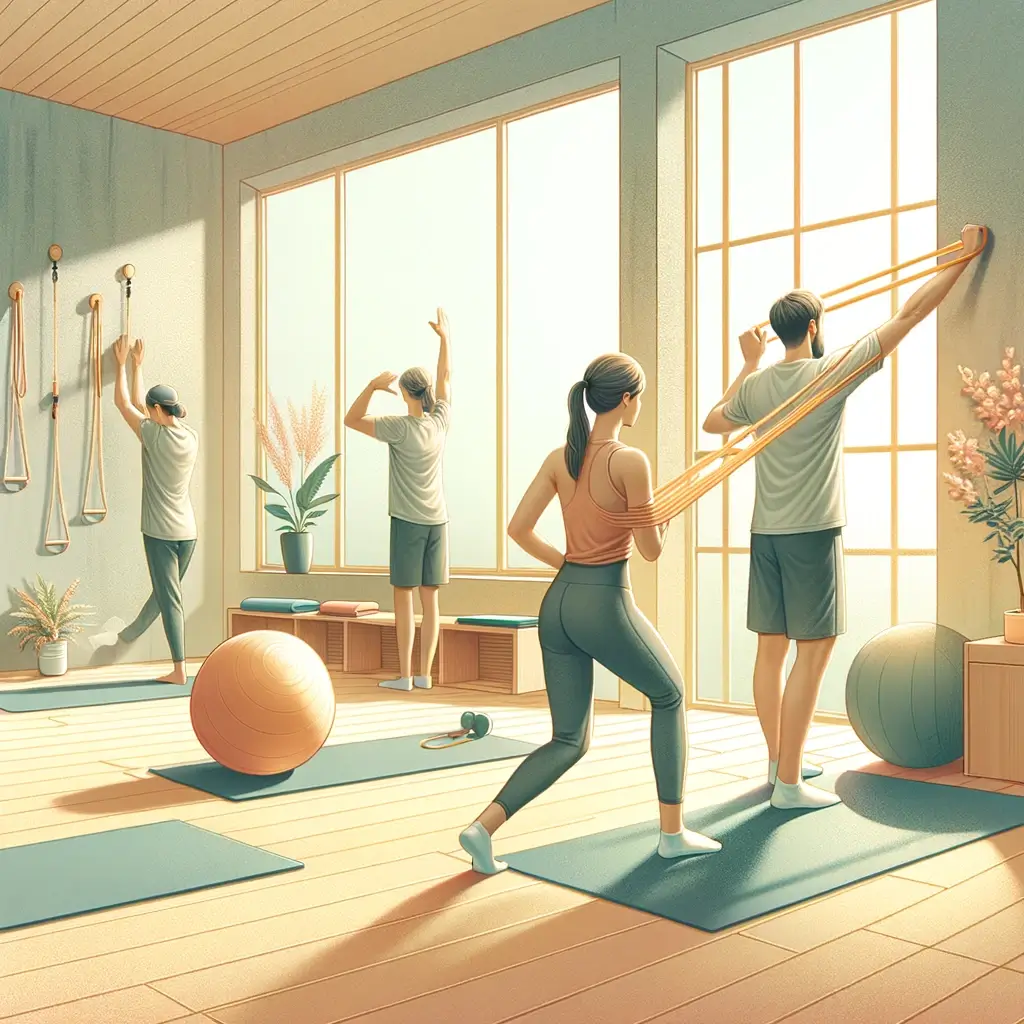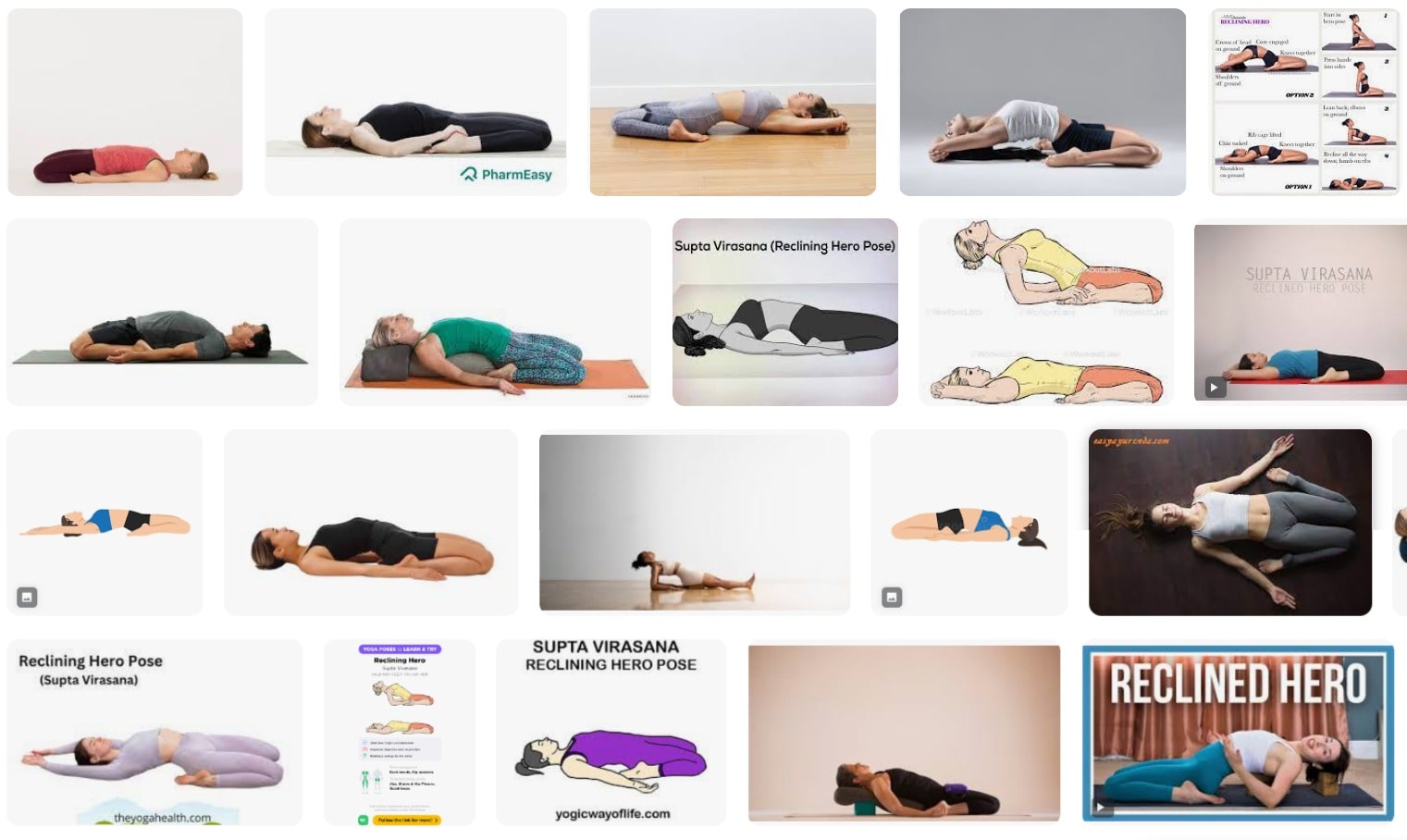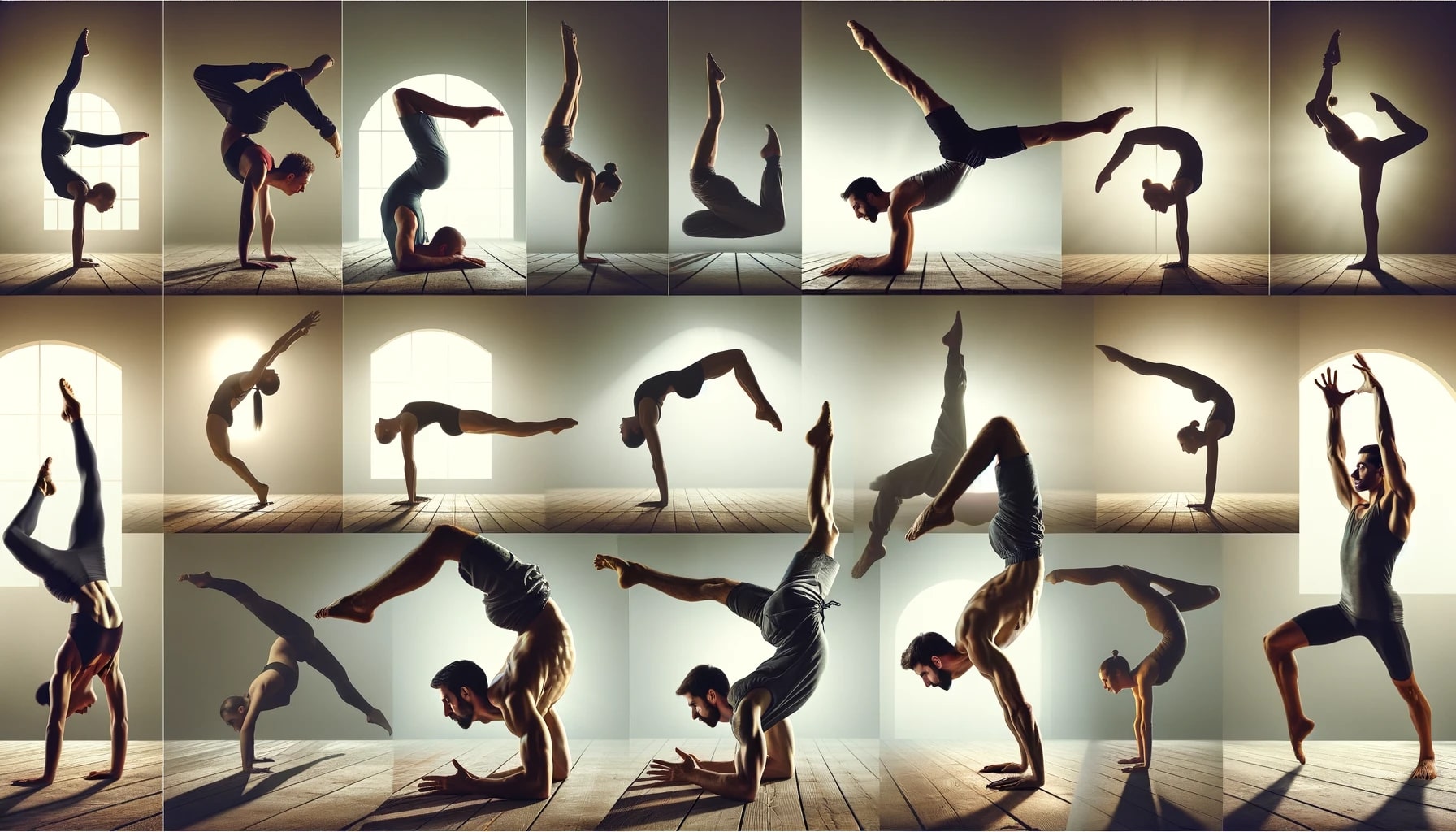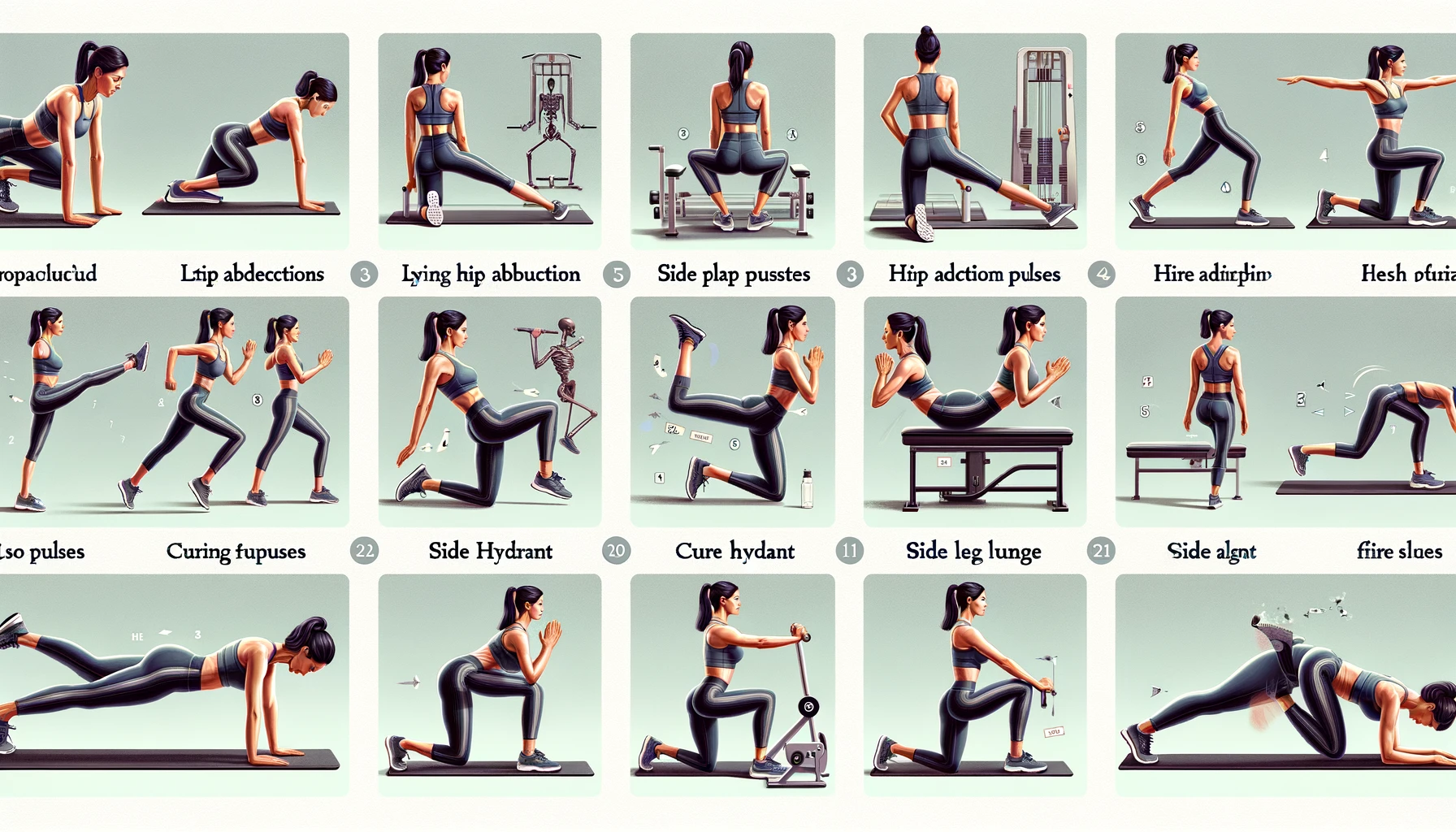Asanas are physical postures or poses that are an important part of yoga practice. There are many different asanas, each with its own unique benefits. Some asanas are intended to improve flexibility and strength, while others are meant to calm the mind and relax the body.
In general, asanas are held for a period of time and are meant to be performed with mindfulness and proper alignment. Practicing asanas can help to improve overall physical and mental well-being.
- English pronunciation : ˈjəʊɡə (Yoga) / ˈɑːsənə (Asana) /
- Sanskrit संस्कृतम् : योग (Yōga) / आसन (Āsana) /
- Tamil தமிழ் : யோகா – ஆரோக்கியமான பயிற்சிகள் (Yōkā – ārōkkiyamāṉa payiṟcikaḷ) / ஆசனா (Ācaṉā) / யோகாசனம் (Yōkācaṉam)
- Bahasa Melayu : Yoga – Latihan Kesihatan Fizikal /
- Malayalam : യോഗ (Yēāga) / യോഗാസനം (Yēāgāsanaṁ) /
- Telugu : యోగ (Yōga) / ఆసన (Āsana) /
- Français : Le yoga
Content Outline
Popular Yoga Asanas for Health and Fitness
- Tadasana (Mountain Pose): This is a foundational pose and often the starting point for other asanas. It promotes good posture, strengthens the thighs, knees, and ankles, and can help relieve back pain.
- Adho Mukha Svanasana (Downward-Facing Dog): A powerful stretching pose that strengthens the arms and shoulders, stretches the hamstrings, calves, and spine, and improves flexibility.
- Plank Pose: A fantastic asana for strengthening the core, arms, and legs, improving balance, and promoting good posture.
- Vrikshasana (Tree Pose): This pose enhances balance, strengthens the thighs, calves, ankles, and spine, stretches the groins and inner thighs, and can help improve concentration.
- Savasana (Corpse Pose): A relaxation pose that calms the mind, reduces stress, fatigue, and insomnia, and helps lower blood pressure.
Benefits of Asanas:
- There are many benefits to practicing asanas. Some of the benefits of asanas include:
- Improved flexibility: Asanas can help to improve flexibility by stretching and lengthening the muscles.
- Improved strength: Many asanas require you to hold your own body weight, which can help to build strength.
- Improved balance: Asanas that require balance can help to improve balance and coordination.
- Improved circulation: Some asanas can help to improve blood circulation throughout the body.
- Improved respiratory function: Asanas that involve deep breathing can help to improve respiratory function.
- Stress relief: Many asanas can help to relax the mind and body, leading to stress relief.
- Improved overall well-being: Regular practice of asanas can contribute to an overall feeling of well-being and can help to improve quality of life.
Sanskrit affixes
Sanskrit affixes 01 that are used to indicate modifications to the basic yoga positions, or asanas, include the following:
| English | Sanskrit | Meaning | Example |
| Adho | अधो | downward | Adho Mukha Shvanasana (downward dog) |
| Ardha | अर्ध | half | Ardha Padmasana (half lotus) |
| Baddha | बद्ध | bound | Baddha Konasana (bound angle) |
| Dvi | द्वि | two | Dvi Pada Kaundinyasana (two-legged Kaundinya) |
| Eka | एक | one | Eka Pada Shirshasana (one-legged headstand) |
| Parivritta | परिवृत्त | revolved | Parivritta Trikonasana (reverse triangle) |
| Prasarita | प्रसारित | spread out | Prasarita Padottanasana (wide stance forward bend) |
| Salamba | षलम्ब | supported | Salamba Shirshasana (supported headstand) |
| Supta | सुप्त | supine, reclining | Supta Virasana (reclining hero) |
| Upavishta | उपविष्ठ | seated | Upavishta Konasana (wide-angle seated forward bend) |
| Urdhva | ऊर्ध्व | upwards | Urdhva Dhanurasana (upwards bow) |
| Utthita | उत्थित | extended | Utthita Parsvakonasana (extended side angle) |
| Viparita | विपरीत | inverted | Viparita Dandasana (inverted staff) |
An āsana (Sanskrit: आसन) is a body posture,
Asanas | Meanings |
|---|---|
| Adho Mukha Svanasana | Down Dog |
| Akarna Dhanurasana | Archer Pose |
| Ardha Chandrasana | Half Moon Pose |
| Ardha Matsyendrasana | Seated spinal Twist Pose / Half Fish Lord Pose |
| Ardha Pavanmuktasana | Half Gas Release Pose |
| Ashwa Sanchalanasana | Equestrian Pose |
| Baddha Konasana | Butterfly |
| Baddha-Padmasana | Bound Lotus Pose |
| Bhadrasana | Gracious Pose |
| Balasana / Shashakasana | Child’s Pose |
| Brahmamudra | – |
| Bujangasana | Cobra Pose |
| Chakrasana | Wheel Pose |
| Chaturanga Dandasana | – |
| Dandasana | Staff Pose |
| Dhanurasana | Bow Pose |
| Ekpadaskandhasna | Foot Behind the Head Pose |
| Garbhasana | Womb Pose |
| Garudasana | Eagle Pose |
| Gowmukhasana | Cow Face Pose |
| Halasana | Plow Pose |
| Hanumansana | Splits |
| Janu Sirsasana | Head to Knee Pose |
| Janu Shirasana | Nose to Knee Pose |
| Kandhrasana | Shoulder Pose |
| Kapotasana | Pigeon Pose |
| Karna Pidasana | Knee to Ear / Deaf man pose |
| Kukkutasana | Rooster Pose |
| Marjariasana | Cat / Cow Pose |
| Makarasana | Crocodile Poses (4 Variations) |
| Mandukasana | Frog Pose |
| Matsyasana | Fish Pose |
| Mayurasana | Peacock |
| Natarajasana | Shiva Dancing Pose |
| Navkasana / Naukasana | Boat Pose |
| Padahastasana | Hands to Feet Pose |
| Padmasana | Lotus Pose |
| Padma-Bakasana | Lotus Crane Pose |
| Paschimottanasana | Seated Forward Bend |
| Parivrtta Trikonasana | Revolved Triangle / Reverse Triangle Pose |
| Parsvottanasana | Intense Side Stretch |
| Parshvava Chakrasana | Sidebending Pose |
| Prasarita Padottanasana | Standing Wide Legged Forward Bend |
| Parvatasana | Mountain Pose |
| Pavanmuktasana | Gas Release Pose |
| Poorna Matsyendrasana | Full Fish Lord Pose |
| Raja Kapotasana | Royal Pidgeon |
| Salabhasana | Locust Pose |
| Sankatasana | Contracted Pose |
| Shava Udarakarshanasana | Universal Spinal Twist |
| Sarvangasana | Shoulder stand |
| Setu Bandhasana | Bridge Pose |
| Setu Bandha Sarvangasana | Bridge Pose |
| Siddhasana | Accomplished Pose |
| Sirsasana | Head Stand Pose |
| Sirsa Padangushthasan | Head to Big Toe Pose |
| Sukhasana | Easy pose |
| Siddhasana | Accomplished pose |
| Simhasana | Lion Pose |
| Supta Hasta Pada Angushthasana | – |
| Supta Baddha Konasana | Reclined Butterfly |
| Supta Mandukasana | Sleeping Frog Pose |
| Supta Vajrasana | Sleeping Thunderbolt Pose |
| Svastikasana | Auspicious / Prosperous Pose |
| Savasana | Corpse Pose |
| Tadasana A & B | Mountain Pose / Palm Tree Pose A & B |
| Tolangulasana | Scale Pose |
| Trikonasana | Triangle Pose |
| Ugrasana | Ferocious Pose |
| Urdhva Dhanurasana | Wheel Pose |
| Ustrasana | Camel Pose |
| Uttanasana | Forward Fold |
| Uttanpadasana | Raising Feet Pose |
| Uttan Mandukasana | Raising Frog Pose |
| Uttana Kurmasana | Raising Tortoise Pose |
| Utkatasana | Chair pose |
| Utthita Trikonasana | Triangle |
| Utthita Parsvottanasana | Extended side angle pose |
| Upavistha Konasana | – |
| Vadha Gomukhasana | Bound Cow Face Pose |
| Vajrasana | Strong / Thunderbolt Pose |
| Vakrasana | Twisting Pose |
| Vasisthasana | Side Plank |
| Vatayanasana | Horse Pose |
| Viparita Karani | Legs up the Wall Pose |
| Viprit Naukasana | Inverted Boat Pose |
| Virabhadrasana I | Warrior 1 |
| Virabhadrasana II | Warrior 2 |
| Virabhadrasana III | Warrior 3 |
| Virasana | Hero Pose |
| Vrksasana | Tree Pose |
| Yoga Mudra | Yoga Mudra |
(2) Ashtanga Vinyasa Yoga (Primary Series)
Ashtanga Vinyasa Yoga is a specific sequence of postures linked together by the breath. The Primary Series, also known as Yoga Chikitsa, is the first series of asanas in Ashtanga Yoga. Here is a table for the complete sequence, but please note that it’s always recommended to learn these postures from a qualified yoga teacher to ensure correct alignment and avoid injuries.
| S.No. | English Name | Sanskrit Name |
|---|---|---|
| 1. | Sun Salutation A | Surya Namaskara A |
| 2. | Sun Salutation B | Surya Namaskara B |
| 3. | Standing Forward Bend | Padahastasana |
| 4. | Triangle Pose | Trikonasana |
| 5. | Revolved Triangle Pose | Parivrtta Trikonasana |
| 6. | Extended Side Angle Pose | Parsvakonasana |
| 7. | Revolved Side Angle Pose | Parivrtta Parsvakonasana |
| 8. | Wide Legged Forward Bend | Prasarita Padottanasana |
| 9. | Extended Triangle Pose | Utthita Trikonasana |
| 10. | Pyramid Pose | Parsvottanasana |
| 11. | Warrior I | Virabhadrasana I |
| 12. | Warrior II | Virabhadrasana II |
| 13. | Seated Forward Bend | Pashimottanasana |
| 14. | Half Bound Lotus Seated Forward Bend | Ardha Baddha Padma Pashimottanasana |
| 15. | Bound Angle Pose | Baddha Konasana |
| 16. | Upward Facing Bow Pose | Urdhva Mukha Pashimottanasana |
| 17. | Hero’s Pose | Virasana |
| 18. | Marichi’s Pose | Marichyasana |
| 19. | Boat Pose | Navasana |
| 20. | Half Lord of the Fishes | Ardha Matsyendrasana |
| 21. | Cow Face Pose | Gomukhasana |
| 22. | Seated Wide-Legged Forward Bend | Upavistha Konasana |
| 23. | Supine Bound Angle Pose | Supta Baddha Konasana |
| 24. | Reclining Hero Pose | Supta Virasana |
| 25. | Shoulder-Pressing Pose | Bhujapidasana |
| 26. | Lotus Pose | Padmasana |
| 27. | Corpse Pose | Savasana |
DISCLAIMER: Each of these poses is linked with the breath, with inhalations typically associated with upward movements and exhalations associated with downward movements or twists. It’s also common to spend five breaths in each pose before moving on to the next, promoting a meditative state through the focus on breath and movement.
(4) Sivananda Yoga
Sivananda Yoga is a classical and holistic approach to Hatha Yoga that focuses on proper breathing, relaxation, diet, exercise, and positive thinking. The Sivananda sequence consists of 12 basic asanas or postures, each complimenting the previous one.
Sivananda Yoga is a classical and holistic approach to Hatha Yoga that focuses on proper breathing, relaxation, diet, exercise, and positive thinking. The Sivananda sequence consists of 12 basic asanas or postures, each complimenting the previous one.
Here’s a table for the Sivananda Yoga sequence:
| S.No. | English Name | Sanskrit Name |
|---|---|---|
| 1. | Headstand | Sirsasana |
| 2. | Shoulderstand | Sarvangasana |
| 3. | Plough Pose | Halasana |
| 4. | Fish Pose | Matsyasana |
| 5. | Seated Forward Bend | Paschimottanasana |
| 6. | Cobra Pose | Bhujangasana |
| 7. | Locust Pose | Shalabhasana |
| 8. | Bow Pose | Dhanurasana |
| 9. | Half Spinal Twist | Ardha Matsyendrasana |
| 10. | Crow or Peacock Pose | Kakasana or Mayurasana |
| 11. | Standing Forward Bend | Padahastasana |
| 12. | Triangle Pose | Trikonasana |
Note: Each practice usually starts with pranayama exercises (like Anuloma Viloma) and ends with relaxation in Savasana. The Sivananda practice also emphasizes the five points of yoga which are proper exercise (asanas), proper breathing (pranayama), proper relaxation (Savasana), proper diet (vegetarian), and positive thinking (Vedanta) and meditation (Dhyana). As always, practice under the guidance of a qualified yoga instructor.
(5) Iyengar Yoga
(6) Raja Yoga
Raja Yoga, also known as the “Royal Path” or “Ashtanga Yoga” (not to be confused with Ashtanga Vinyasa Yoga), refers to the eightfold path of yoga outlined by Patanjali in the Yoga Sutras. It doesn’t comprise specific yoga asanas or poses like other forms of yoga, but it includes a comprehensive system of disciplines and practices aimed at self-realization and enlightenment.
Here’s a table outlining the eight limbs or steps of Raja Yoga:
| S.No. | English Translation | Sanskrit Name |
|---|---|---|
| 1. | Ethical Standards | Yama |
| 2. | Personal Disciplines | Niyama |
| 3. | Yoga Postures | Asana |
| 4. | Breath Control | Pranayama |
| 5. | Withdrawal of the Senses | Pratyahara |
| 6. | Concentration | Dharana |
| 7. | Meditation | Dhyana |
| 8. | Self-realization/Enlightenment | Samadhi |
(7) Kundalini Yoga
Kundalini Yoga is known for its comprehensive approach that incorporates several elements in each practice. Rather than a fixed sequence of poses as seen in some other forms of yoga, Kundalini Yoga usually involves performing kriyas, which are specific sets of exercises, along with chanting, pranayama, and meditation.
The exact structure of a Kundalini Yoga practice can vary widely and often depends on the teacher and the specific goals of the session. A typical Kundalini Yoga class might follow a structure similar to the one below:
| S.No. | Activity |
|---|---|
| 1. | Tuning in with the Adi Mantra (“Ong Namo Guru Dev Namo”) |
| 2. | Warm-up exercises |
| 3. | Pranayama (breathing exercises) |
| 4. | Kriya (a series of asanas with specific focus) |
| 5. | Relaxation |
| 6. | Meditation |
| 7. | Closing with the Long Time Sun Blessing |
| 8. | Sat Nam closing |
It’s important to note that each kriya is different and is designed for a specific purpose, such as for the spine, for the digestive system, for mental clarity, etc. The specific kriyas and meditations used in a Kundalini Yoga class can vary widely, so there’s no standard set of asanas or exercises that can be laid out in a table like for some other yoga styles.
It’s always recommended to learn Kundalini Yoga under the guidance of a qualified teacher to ensure that the exercises are being done correctly and safely.
(8) Bhakti Yoga & Kirtan (mantra chanting)
- Positive effects on the emotions
- Correct pronunciation and mental attitude
- Learning of classical Sanskrit songs
- The nine types of Bhakti
- The five attitudes of devotion
- Kirtan: chanting of classical Sanskrit mantras
- Indian gods and their cosmic meaning
- Arati and Pujas (traditional Indian rituals)
- Chanting opens the heart and purifies the mind. With daily chanting, you develop a strong feeling of devotion and a very pure vibration. In devotional chanting correct pronunciation, devotional attitude and awareness of meaning are all-important.
(9) Karma Yoga
- Karma yoga is the practice of selfless service and helps to reduce selfishness and egoism and keeps you fit and healthy and gives immeasurable joy
- You will be asked to do various tasks within the Ashram setting including gardening, cooking, cleaning, office work and any other work necessary for the smooth running of the community
- The law of cause and effect
- Samsara – the wheel of birth and death
- Karma Yoga – selfless service: one hour daily in the ashram community
(10) Jnana Yoga
- Basic concepts of Vedanta philosophy
- The 7 Bhoomikas or planes of consciousness
- Space, time, causation
- The 3 bodies
- The 3 levels of the mind
- Conquest of death
(11) Pranayama (breathing techniques)
- Expands capacity of the lungs
- Relaxes the nervous system
- Balances the two hemispheres of the brain
- Purifies the nadis (subtle energy channels)
- Awakens the inner spiritual energy
- Kapalabhati (lung cleansing exercise)
- Anuloma Viloma (alternate nostril breathing)
- Ujjayi, Surya Bheda, Bhastrika, Sitali, Sitkari, Bhramari
- Samanu (mental cleansing of the nadis)
- The three bandhas: Jalandhara, Moola, Uddiyana
- 1. Bhastrika
- a- Deep Breathing
- b- Fast Breathing
- 2. Nadi-Shodhan
- a- Anuloma Viloma
- b- Nadi -Shodhan with retension
- 3. Surya-Bhedhan
- 4. Chandra-Bhedhan
- 5. Ujjayi
- 6. Shitali
- 7. Sitkari
- 8. Bhramari
- 9. Udgita
- 10. Theory of Murccha
- 11. Bahiya
- 12. Aabhyantra
- 13. Stambh
- 14. Bahiya Aabhantar Vishyakshepi
- 15. Theory of Plavini
(12) Yogic Shatkarmas / Kriyaa (cleansing techniques)
•Tratak, Neti, Kapalabhati, Dhauti, Nauli and Basti: six classical purification exercises for the eyes, nose, air passages, oesophagus and stomach, abdominal organs and large intestine. Explanation and demonstration of the exercises and their effects. Individual instruction
- 1. Neti
- a- Jala Neti
- b- Rubber Neti
- c- Sutra Neti
- 2. Dhauti (Vamana)
- a- Kunjal
- b- Danda Dhauti
- c- Vastra Dhauti / Bastra Dhauti (Cloth)
- d- Vatsara Dhauti
- e- Agnisara
- f- Shankha Prakshalana
- 3. Nauli
- 4. Basti
- a- Jal Basti
- b- Pawan Basti
- 5. Kapalabhati
- a- Kapalabhati 1
- b- Kapalabhati 2
- 6. Trataka
- a- External Trataka
- b- Internal Trataka
(13) Bandhas (Yogic locks)
(14) Meditation
- Guide to meditation
- What is meditation
- Why meditate
- Physical and mental meditation
- 12-step daily practice
- Effects of and experiences in meditation
- Mantras – spiritual energy in sound
- Mantra initiation (if desired)
(15) Basic Ayurveda, yoga nutrition and the yogic diet
- Vegetarianism – for ethical, spiritual and health reasons
- How diet affects the mind
- Proper balance of the main nutrients
- Ayurvedic principles of nutrition
- Healing effects of fasting
1. Panchmahabhoota Theory
2. Tridosha Theory (Proper nutrition according to the three-Dosha theory of Ayurveda)
3. Dhatus in Ayurveda
4. Dhatus as it Relates to Modern Medicine
5. Prakriti Analysis
6. Diet According to Prakriti
7. General Introduction to Diet & subtle aspects of the vegetarian diet
8. Yogic Diet
9. Mindful Eating
10. Pancha Prana
11. Pancha Kosha
(16) Introduction to chakras, nadis & mudras
- Gyana Mudra
- Chin Mudra
- Yoni Mudra
- Bharav Mudra
- Bhairvi Mudra
- Hridaya Mudra
- Vayu Mudra
- Shunya Mudra
- Surya Mudra
- Varun Mudra
- Prithvi Mudra
- Pran Mudra
- Apana Mudra
- Shambhavi Mudra
- Nasikagra Mudra
- Khechari Mudra
- Kaki Mudra
- Viparitkarni Mudra
- Pashinee Mudra
- Yoga Mudra
- Maha Mudra
- Ashvini Mudra









Your article gave me a lot of inspiration, I hope you can explain your point of view in more detail, because I have some doubts, thank you.
I am currently writing a paper and a bug appeared in the paper. I found what I wanted from your article. Thank you very much. Your article gave me a lot of inspiration. But hope you can explain your point in more detail because I have some questions, thank you. 20bet
I am currently writing a paper that is very related to your content. I read your article and I have some questions. I would like to ask you. Can you answer me? I’ll keep an eye out for your reply. 20bet
Thank you very much for sharing, I learned a lot from your article. Very cool. Thanks. https://casinotologin.com/gatecoin.online_http_output.html
Can you be more specific about the content of your article? After reading it, I still have some doubts. Hope you can help me. https://accounts.binance.com/ru-UA/register?ref=DB40ITMB
I don’t think the title of your article matches the content lol. Just kidding, mainly because I had some doubts after reading the article. https://www.binance.info/kz/join?ref=PORL8W0Z
Your point of view caught my eye and was very interesting. Thanks. I have a question for you. https://www.binance.info/pl/join?ref=V2H9AFPY
Your point of view caught my eye and was very interesting. Thanks. I have a question for you. https://www.binance.info/ka-GE/join?ref=FIHEGIZ8
I don’t think the title of your article matches the content lol. Just kidding, mainly because I had some doubts after reading the article. https://accounts.binance.com/lv/register?ref=53551167
Thank you for your sharing. I am worried that I lack creative ideas. It is your article that makes me full of hope. Thank you. But, I have a question, can you help me? https://www.binance.com/tr/join?ref=UM6SMJM3
Can you be more specific about the content of your article? After reading it, I still have some doubts. Hope you can help me. https://www.binance.info/pt-BR/join?ref=S5H7X3LP
Can you be more specific about the content of your article? After reading it, I still have some doubts. Hope you can help me. https://www.binance.info/tr/join?ref=WTOZ531Y
Your point of view caught my eye and was very interesting. Thanks. I have a question for you. https://www.binance.info/join?ref=T7KCZASX
Your point of view caught my eye and was very interesting. Thanks. I have a question for you. https://www.binance.com/pt-BR/join?ref=WTOZ531Y
Your point of view caught my eye and was very interesting. Thanks. I have a question for you.
Wow, wonderful weblog format! How long have you been blogging for?
you made running a blog glance easy. The total look of your website is excellent, let alone the content!
You can see similar here najlepszy sklep
Thanks for sharing. I read many of your blog posts, cool, your blog is very good.
Your point of view caught my eye and was very interesting. Thanks. I have a question for you.
Hi! Do you know if they make any plugins to
assist with SEO? I’m trying to get my blog to rank for
some targeted keywords but I’m not seeing very
good results. If you know of any please share. Many thanks!
You can read similar article here: Najlepszy sklep
Hi there! Do you know if they make any plugins to assist with Search Engine Optimization? I’m trying to get my
blog to rank for some targeted keywords but I’m not seeing very good success.
If you know of any please share. Appreciate it! You can read similar article here:
Sklep online
Hi there! Do you know if they make any plugins to help
with SEO? I’m trying to get my blog to rank for some targeted keywords but I’m not seeing very good results.
If you know of any please share. Kudos! You can read similar blog here:
Ecommerce
Hello! Do you know if they make any plugins to assist with Search Engine Optimization? I’m trying to get my blog to rank for some
targeted keywords but I’m not seeing very good success.
If you know of any please share. Cheers! You can read similar article here: Ecommerce
Your point of view caught my eye and was very interesting. Thanks. I have a question for you.
Your article helped me a lot, is there any more related content? Thanks!
Can you be more specific about the content of your article? After reading it, I still have some doubts. Hope you can help me.
Hi there! Do you know if they make any plugins to help
with Search Engine Optimization? I’m trying to get my blog
to rank for some targeted keywords but I’m not seeing
very good gains. If you know of any please share. Appreciate it!
I saw similar blog here: Scrapebox AA List
Thank you for your sharing. I am worried that I lack creative ideas. It is your article that makes me full of hope. Thank you. But, I have a question, can you help me?
Wow, incredible weblog format! How long have you been blogging for?
you made running a blog glance easy. The whole look of your web
site is excellent, let alone the content material!
You can see similar here sklep internetowy